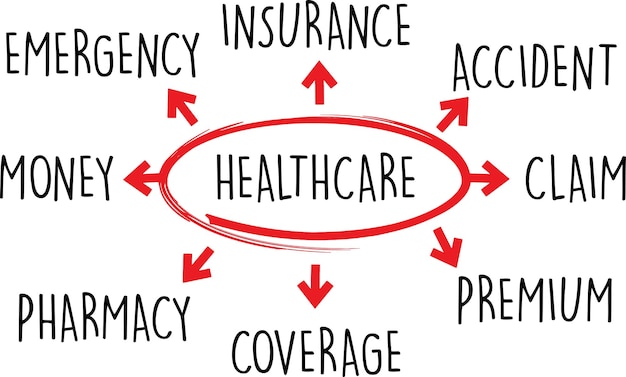Understanding Medicare Part D Changes for 2025: What You Need to Know

Understanding the New Medicare Part D Prescription Drug Plan Changes for 2025 involves significant reforms designed to lower prescription drug costs, improve access, and enhance the overall affordability and predictability of medication expenses for Medicare beneficiaries.
Navigating the complexities of Medicare can be daunting, especially when changes are on the horizon. With the upcoming modifications to Medicare Part D in 2025, it’s crucial to stay informed. This guide provides a clear understanding of the new Medicare Part D Prescription Drug Plan Changes for 2025, ensuring you’re well-prepared to make the most of your healthcare benefits.
Decoding Medicare Part D: A Primer
Medicare Part D is the component of Medicare that provides coverage for prescription drugs. Understanding how it works is essential before diving into the upcoming changes.
Part D plans are offered by private companies that have been approved by Medicare. These plans help cover the costs of prescription drugs, reducing out-of-pocket expenses for beneficiaries.
Key Features of Medicare Part D
Medicare Part D plans have several key features that influence how beneficiaries access and pay for their medications.
- Premiums: Beneficiaries pay a monthly premium to enroll in a Part D plan. These premiums vary depending on the plan’s coverage and the beneficiary’s income.
- Deductibles: Many Part D plans have an annual deductible that beneficiaries must meet before the plan begins to pay for prescription drugs.
- Cost-Sharing: After meeting the deductible, beneficiaries typically pay a copayment or coinsurance for each prescription.
Coverage Gap: Currently, Medicare Part D includes a coverage gap, often referred to as the “donut hole,” where beneficiaries pay a higher share of their drug costs. However, this will change significantly in 2025.

Formulary: Each Part D plan has a formulary, which is a list of covered drugs. These formularies can vary, so it’s important for beneficiaries to check if their medications are included.
Understanding these elements is crucial for appreciating the impact of the upcoming changes to Medicare Part D in 2025. Stay tuned as we explore these reforms in detail.
The Inflation Reduction Act: Catalyst for Change
The changes to Medicare Part D in 2025 are primarily driven by the Inflation Reduction Act (IRA), signed into law in August 2022. This landmark legislation aims to lower healthcare costs for millions of Americans.
One of the key provisions of the IRA focuses on reforming Medicare Part D to make prescription drugs more affordable and accessible.
Major Provisions of the Inflation Reduction Act
The IRA includes several provisions that will significantly impact Medicare Part D beneficiaries.
- Caps on Insulin Costs: The IRA caps the cost of insulin at $35 per month for Medicare beneficiaries, providing substantial relief for those with diabetes.
- Vaccine Coverage: The law expands access to free vaccines for seniors, ensuring they can protect themselves from preventable illnesses without financial burden.
- Negotiation of Drug Prices: The IRA allows Medicare to negotiate drug prices for certain high-cost medications, a long-sought goal aimed at reducing overall drug spending.
These provisions collectively represent a significant step towards easing the financial burden of healthcare for seniors. The negotiation of drug prices, in particular, has the potential to deliver long-term savings for both beneficiaries and the Medicare program.
The IRA also addresses issues related to the coverage gap and out-of-pocket expenses, which we will explore in the following sections.
Eliminating the Coverage Gap: A Major Reform
One of the most significant changes coming to Medicare Part D in 2025 is the elimination of the coverage gap, commonly known as the “donut hole.”
Historically, the coverage gap required beneficiaries to pay a higher share of their prescription drug costs after their total drug spending reached a certain threshold. This gap often led to financial strain for those with chronic conditions requiring multiple medications.
How the Elimination Works
The IRA eliminates the coverage gap by phasing out the cost-sharing structure that required beneficiaries to pay a larger percentage of their drug costs during this phase.
In 2025, beneficiaries will no longer face the steep cost increases associated with the coverage gap, providing more predictable and affordable access to their medications.
- Predictable Costs: With the elimination of the coverage gap, beneficiaries can better anticipate their monthly drug expenses.
- Financial Relief: The change reduces the financial burden for those who previously struggled to afford their medications during the coverage gap.
- Improved Adherence: By making drugs more affordable, the elimination of the coverage gap may lead to better adherence to prescribed medication regimens, improving health outcomes.
This reform is expected to have a profound impact on Medicare beneficiaries, particularly those with chronic conditions and high prescription drug needs.

The elimination of the coverage gap represents a major step forward in making prescription drugs more affordable and accessible for Medicare beneficiaries.
Capping Out-of-Pocket Expenses: Predictability and Security
In addition to eliminating the coverage gap, the IRA introduces a cap on out-of-pocket expenses for Medicare Part D beneficiaries, providing further financial security.
Starting in 2025, beneficiaries will have their out-of-pocket drug costs capped at $2,000 per year. This cap is designed to protect beneficiaries from catastrophic drug expenses.
The Impact of the Out-of-Pocket Cap
The out-of-pocket cap offers several key benefits for Medicare Part D beneficiaries.
Financial Predictability: Beneficiaries can plan their healthcare budgets with greater certainty, knowing their drug expenses will not exceed $2,000 in a given year.
- Protection from High Costs: The cap protects beneficiaries from unexpected and exorbitant drug costs, especially those requiring specialty medications.
- Peace of Mind: Knowing there is a limit on out-of-pocket expenses can reduce stress and anxiety related to healthcare affordability.
This cap addresses a significant concern for many Medicare beneficiaries who worry about the potential for high drug costs to deplete their savings.
The out-of-pocket cap is particularly beneficial for those with chronic conditions, such as cancer, HIV/AIDS, and autoimmune disorders, who require ongoing and expensive medications.
Medicare’s Negotiation Power: Lowering Drug Prices
One of the most impactful provisions of the Inflation Reduction Act is the authorization for Medicare to negotiate drug prices directly with pharmaceutical companies.
Previously, Medicare was prohibited from negotiating drug prices, which led to higher costs for beneficiaries and the government. The IRA changes this, allowing Medicare to leverage its purchasing power to secure lower prices for certain high-cost drugs.
How Drug Price Negotiation Works
The negotiation process will be rolled out in phases, starting with a select number of drugs. The negotiated prices will then be available to Medicare beneficiaries, lowering their out-of-pocket costs.
- Phased Implementation: The negotiation process will be implemented gradually, allowing for adjustments and refinements along the way.
- Selection of Drugs: The drugs selected for negotiation will be those with the highest costs and utilization, ensuring the greatest potential savings.
- Impact on Premiums: The negotiation of drug prices is expected to help stabilize or even lower Medicare Part D premiums over time.
This provision has the potential to transform the landscape of prescription drug pricing, providing long-term savings for Medicare beneficiaries and taxpayers alike.
The negotiation of drug prices is a critical step towards making healthcare more affordable and sustainable.
Preparing for the 2025 Changes: What You Need to Do
As the changes to Medicare Part D in 2025 approach, it’s important for beneficiaries to take proactive steps to prepare.
Staying informed and understanding your options will help you make the most of these reforms and ensure you have access to the medications you need at affordable prices.
Steps to Take Now
Here are some steps you can take to prepare for the 2025 changes:
- Review Your Current Plan: Take a close look at your current Medicare Part D plan, including its formulary, premiums, and cost-sharing structure.
- Stay Informed: Keep up-to-date with the latest information about the changes to Medicare Part D by visiting the official Medicare website and consulting with healthcare professionals.
- Compare Plans: In the fall of each year, Medicare offers an open enrollment period where you can compare different Part D plans and choose the one that best meets your needs.
Consult with Professionals: Consider consulting with a financial advisor or benefits counselor who can help you understand how the changes will affect your individual situation and make informed decisions.
By taking these steps, you can ensure you are well-prepared to navigate the upcoming changes to Medicare Part D and maximize your healthcare benefits.
| Key Point | Brief Description |
|---|---|
| 💊 Coverage Gap Elimination | “Donut hole” phased out, providing more predictable drug costs. |
| 💰 Out-of-Pocket Cap | Annual out-of-pocket drug costs capped at $2,000. |
| 🤝 Drug Price Negotiation | Medicare can negotiate drug prices to reduce costs. |
Frequently Asked Questions
▼
The most significant changes, including the elimination of the donut hole and the $2,000 out-of-pocket cap, are set to take effect in January 2025, providing immediate relief to many beneficiaries.
▼
By eliminating the coverage gap, you’ll avoid the sharp rise in prescription drug costs once you reach the donut hole, making your medication expenses more predictable and manageable throughout the year.
▼
It is vital to always check if your medications are on your plans formulary. Work with your doctor to explore therapeutic alternatives or file an exception if necessary.
▼
The $2,000 cap means that once you’ve spent this amount on prescription drugs, you won’t have to pay any more for covered medications for the rest of the year, offering significant financial protection.
▼
For more detailed information, visit the official Medicare website or consult with a healthcare professional or benefits counselor who can provide personalized guidance tailored to your specific needs.
Conclusion
The impending changes to Medicare Part D in 2025 represent a significant step forward in making prescription drugs more affordable and accessible for millions of Americans. By understanding these changes and taking proactive steps to prepare, beneficiaries can ensure they are well-positioned to maximize their healthcare benefits and maintain their health and well-being.
